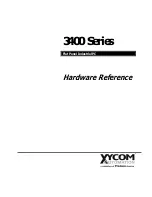
Operating and Maintenance Manual
8 |
P a g e
D e c a p p e r O & M M a n u a l R e v D
➢
Decapper Operation
The Decapper operation is generally as follows.
❖
Cases do not always need to be sorted perfectly. However, some
case combinations can be a problem as they can nestle within the
other case and jam in the drop tube. This will result in nuisance
jams and potentially damage to the decapper. (9mm fits nicely
inside a 40S&W).
1.
Remove rocks, debris, and other contaminants from the fired cases
(light soot and soiling on the cases is acceptable).
2.
The cases are fed from your casefeeder though the supplied feed
hose.
3.
Cases fall into the drop tube which in turn allows individual cases
to be control fed into the case pusher.
4.
The motor rotation lifts the Decapper (moving up and down
vertically) while the case pusher moves horizontally backwards and
forwards.
5.
As the case is pushed into position
it will “snap” into the de
capping
position. This position is self-centering.
❖
It does not matter if the case is a small 380ACP or a 44mag
case. The primer position is the same.
6.
As the motor continues to rotate, the case pusher arm pulls back,
and the decapper lowers onto the primer to push out the primer.
The primer will come out with an audible “
pop
”. This noise is
normal and is useful to identify if the primer pin is broken.
❖
We recommend you process cases in small batches so if
you miss identifying a broken pin you will not have to redo
large volumes of cases. For this (and other reasons) we
STRONGLY recommend you keep the decapping pin in your
reloading press)
7.
As the primer is being removed, another case falls in front of the
case pusher.









































